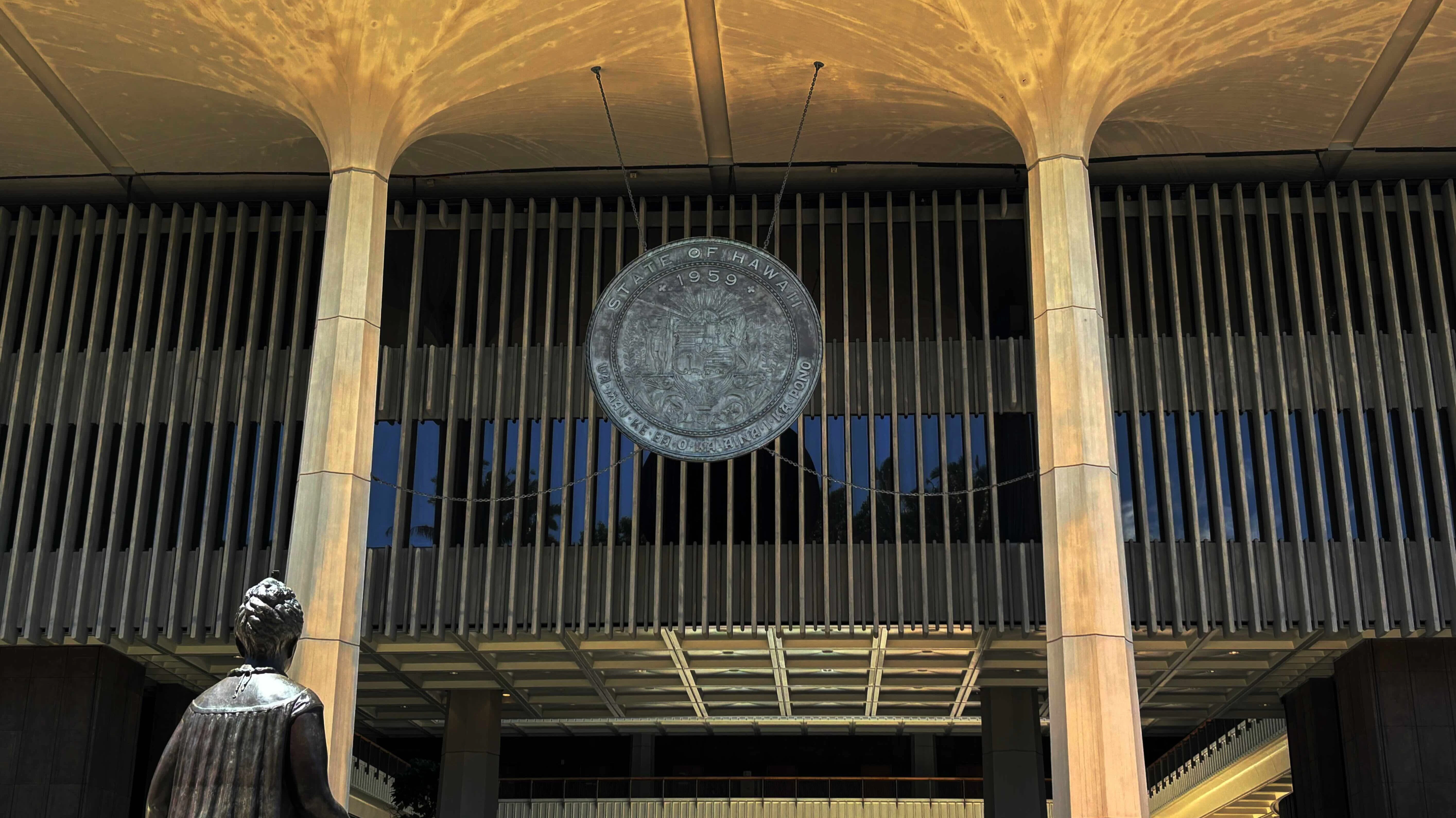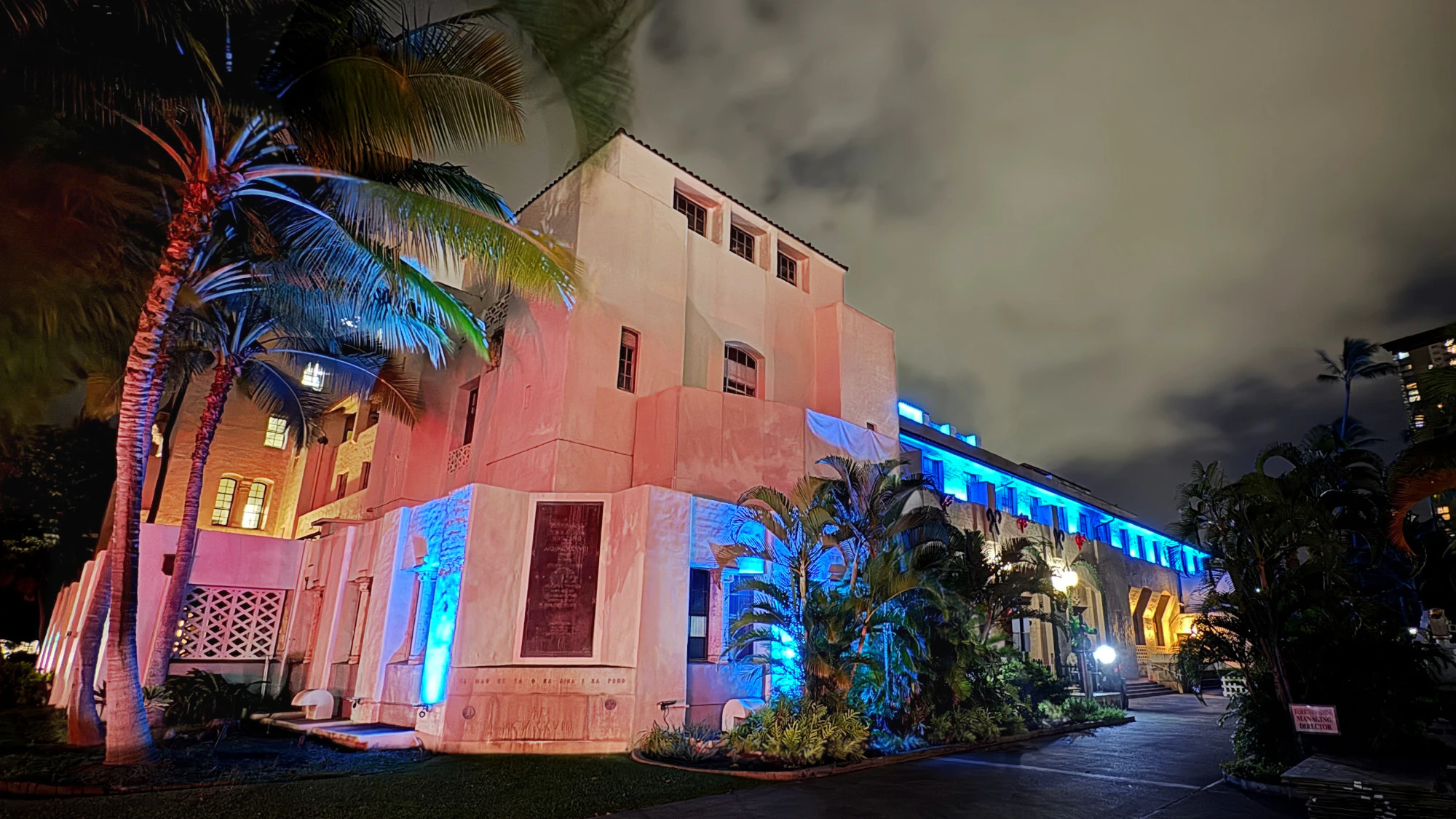In the heart of downtown Honolulu stands a structure with clean lines, an open ceiling, and ominous whispers. Modern and minimalist, the Hawai‘i State Capitol building is a striking departure from the domed, classical government buildings found across the Continental U.S. But beneath its sleek geometry and sunlit courtyards lies a deeper story that begins with royalty, dislocation, and spirits that may never have left.
The land beneath the Capitol wasn’t always reserved for democracy. It once held the castle-like ‘Iolani Barracks, also known as Hale Koa, the House of Warriors. Built in 1871 of coral blocks, the barracks housed the royal guard of King Kamehameha V. Surrounding the open courtyard were rooms once used by the guards for various purposes, including a kitchen and mess hall, a medical dispensary, and a temporary jail.
After the disbanding of the Royal Guard and the overthrow of the Hawaiian monarchy, the building was repurposed in a variety of ways. It served as a temporary shelter for refugees of the devastating 1899 Chinatown fire, became headquarters for the National Guard of Hawaiʻi, housed government offices, and even functioned as a storage facility. Though its role shifted with the times, the stone walls of the barracks remained. For nearly a century, Hale Koa stood firm while the cultural and political landscape evolved around it.
When Governor John A. Burns envisioned a new Capitol to symbolize Hawai‘i’s future, builders carefully dismantled Hale Koa, meticulously numbering each block, and reassembled the structure within the grounds of ‘Iolani Palace, where it remains today.
From this transplant grew something entirely new.
Completed in 1969, the Hawai‘i State Capitol breaks from tradition. There’s no dome. No rotunda. Instead, its architecture is shaped by island geography and cultural symbolism. A wide reflecting pool surrounds the structure, representing the Pacific Ocean that embraces the Hawaiian Islands. Housing the Senate and the House of Representatives, two conical chambers rise on either side, representing the Islands’ volcanic origins. Tall concrete columns line the perimeter of the building, shaped like majestic coconut palms. The central courtyard is open to the sky, allowing sun, rain, and wind to move freely, just as they do in nature.
At the dedication of Hawaii’s state Capitol in 1969, Governor John A. Burns stated, “The open sea, the open sky, the open doorway, open arms, and open hearts — these are the symbols of our Hawaiian heritage. In this great State Capitol, there are no doors at the grand entrances which open toward the mountains and toward the sea. There is no roof or dome to separate its vast inner court from the heavens and from the same eternal stars which guided the first voyagers to the primeval beauty of these shores.”
Reflecting balance and openness, the entire structure is a conversation between earth and sky, people and place. But some believe the conversation has grown … crowded. They say Governor Burns never left.
John A. Burns, Hawai‘i’s second elected governor and the man who championed the construction of the Capitol, is often felt within its walls. Governor Burns was well known for smoking cigars in his office on the fifth floor. People would know the governor was in whenever the pungent scent of cigar smoke drifted through the halls and along the lānai. Now, visitors and staff routinely catch the distinct aroma of a burning cigar in various places around the building, even though the Capitol has been smoke-free since 2006. But not all the hauntings are so stately.
The women’s restroom on the chamber level has a reputation all its own. Staff have complained of the hand dryer turning on suddenly, followed by the sound of water running, even when the room is empty. While skeptics blame faulty sensors, others aren’t so quick to dismiss the encounters. Staffers that say the restroom feels creepy and those who’ve had strange experiences there are office managers and legal aides whose professions demand logic and order, making their encounters all the more eerie.
Unfamiliar with the story, one woman recalled her eerie experience on her first visit to the Capitol building just a few years ago. She explained that while she was in the stall, she heard low, continuous mumbling, just soft enough that she couldn’t make out words. She assumed someone else was in the restroom, but when she stepped out, the restroom was completely empty. The murmuring had stopped, and the woman realized she had been alone all along. When asked if she noticed anyone outside the door, she said there was no one. Nobody outside the door and no one disappearing down the hall. She said aside from the chicken skin moment, she had a nice visit that day at the Capitol, but she doesn’t think she’ll be returning any time soon.
Although the building was designed to echo the harmony of the Islands’ natural beauty, some strange presence still lingers. Maybe it’s the land that was once home to royal warriors, speaking out. Or perhaps some spirits feel they still have work left to do.
Whatever the cause, the Capitol is not as silent as it seems.





